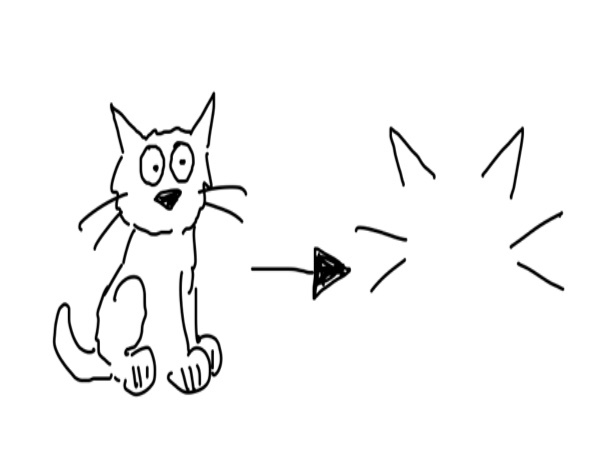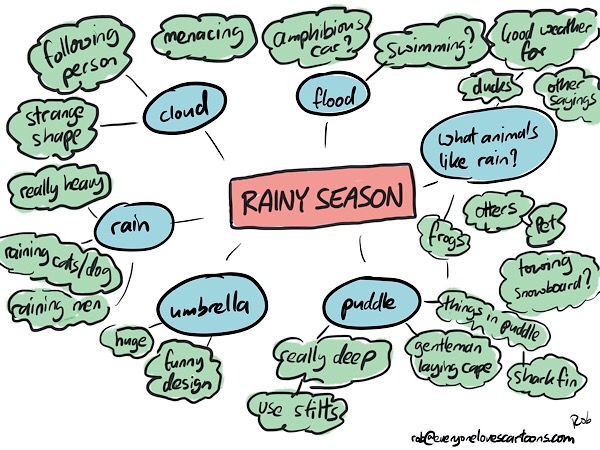A lot of folks think that they can’t draw and so they are hesitant to try even simple drawings on the whiteboard or on slides for fear of looking foolish. Some people think that if they can’t produce cool, stylish drawings then it’s not worth bothering with. However, what they sometimes forget is that the most important thing is to get a point across - and not to dazzle people with your artwork.
This post will show you that there is nothing to be afraid of and that it’s simpler than it looks. By the end of this article you will have a range of practical techniques to produce some very simple drawings of people.
It's not about drawing accurately but about getting a point across.
You don't have to draw this to represent a cat. Pointy ears and whiskers will get the idea across.
In fact, trying to do more complex drawings can be counterproductive as it can break the flow of the lesson or presentation as the more complex the drawing the longer it takes, and also the more complex the drawing, the more there is to go wrong.
One thing that stops people from to draw at all is the fact that they can’t draw as well as other people or an illustration that they’ve seen.
Keep it simple
Even drawing stick figures be be tricky, try using blogs instead.
Are these drawings crude? Sure. Are they laughable? Maybe...but again the key point is to get an idea across.
Most of the time, you’re just trying to get the point across across that your drawing is a person, and not a cat, or car. Because of this it is usually not necessary to draw ears, arms, or legs. A basic blob has only a head and shoulders:
A blob with squiggles for hair is a woman, smaller blobs are children, a baby can look like this.
A neck, arms and legs can be optional at this point.
Adding personality to blobs
Even simple blobs can easily be given a lot of personality
Use Props and details to convey meaning
#5. emotions connect people. If you can, learn to draw a few basic emotions like the ones above.
It is best if you figure out how to represent emotions rather than merely copy them. That way you'll have more of an emotional connection to them.
Body sensations.
Similarly to emotions, it's good to learn a few basic ones.
Actions
Drawing actions can be tricky. Instead, draw objects to represent actions. A knife, for example, depicts the verb cut:
An apple going into a blob’s mouth is eat:
Use colours and words to help.
If you use the same actions often your students will pick up the vocabulary of your drawing.
Buildings
Use a simple shape to represent a building. Once you decide on the shape, stick to the same one for subsequent buildings.
Put a dollar sign in the building, and it is a bank; put a shopping cart in it, and it is a supermarket:
Props and vehicles
This same idea can be applied to vehicles. Don't forget to use a splash of colour to get the meaning across.
Try to anticipate very popular props and how to draw them.
This is the first part of ‘Drawing Cartoons For Those Who Can’t Draw’ - Part II to come soon.








































































































